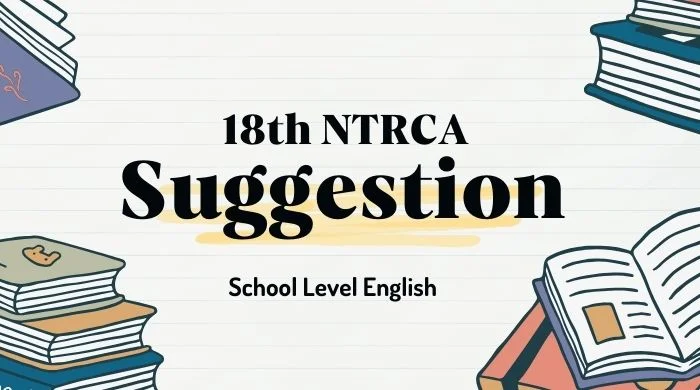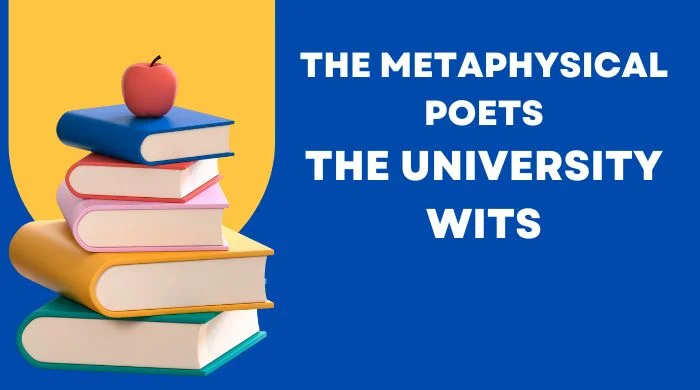Quine Elizabeth 1 এর নাম অনুসারে এই যুগের নামকরণ Elizabethan Age করা হয়। তিনি ১৫৩৩ সালে জন্ম গ্রহণ করেন। তিনি টিউডর বংশের রাজা Henry the VIII এবং Anne Boleyn এর কন্যা ছিলেন। রানী এলিজাবেথ এর বয়স যখন ২.৫ বছর তখন তার মা Anne Boleyn কে শিরচ্ছেদ করে হত্যা করা হয় এবং রানী এলিজাবেথ কে অবৈধ ঘোষণা করা হয়। এলিজাবেথ কে Virgine Quine ও বলা হয়।
Main Feature of the Elizabethan Age:
- Humanism
- The Reformation
- Nationalism
- New Invention
- Religious Tolerance
- Greek and Roman
Humanism
The Humanism of the Elizabethan Age, which flourished during the reign of Queen Elizabeth I (1558–1603), was marked by a revival of classical learning and a focus on the potential and achievements of human beings. Rooted in the Renaissance, Elizabethan Humanism emphasized the study of classical literature from ancient Greece and Rome, observing an intellectual environment that celebrated individual dignity, critical thinking, and a secular approach to knowledge.
Key characteristics of Elizabethan Humanism include:
- Revival of Classical Learning: Scholars and writers of the Elizabethan Age turned to classical sources, drawing inspiration from ancient philosophers, poets, and historians. This revival was facilitated by the translation of works by authors such as Plato, Aristotle, and Cicero into English.
- Focus on Education: Humanists believed in the transformative power of education. The era saw the establishment of grammar schools and universities that promoted a curriculum based on classical languages (Latin and Greek) and literature, history, and moral philosophy.
- Literary and Artistic Flourishing: Elizabethan Humanism contributed to a remarkable period of literary and artistic achievement. Figures like William Shakespeare, Christopher Marlowe, and Ben Jonson produced works that explored complex human emotions and moral dilemmas, often reflecting humanist ideals of individual potential and the importance of rational thought.
- Secularism and Individualism: While religion remained important, Humanism introduced a more secular perspective to intellectual pursuits. It emphasized human agency and the capacity for self-improvement, shifting some focus away from strictly religious themes to broader human experiences and the natural world.
- Critical Thinking and Inquiry: Humanists encouraged questioning established norms and seeking knowledge through empirical evidence and reason. This critical approach led to advances in various fields, including science, philosophy, and politics.
Overall, the Humanism of the Elizabethan Age represented a synthesis of medieval scholasticism and Renaissance ideals, laying the groundwork for the modern emphasis on individualism, education, and a balanced view of humanity’s place in the world.
The Reformation
The Reformation of the Elizabethan Age, occurring during the reign of Queen Elizabeth I (1558–1603), was a pivotal period in English history and literature marked by significant religious transformation and identification. This era followed the tumultuous (কলাহলপূর্ণ) changes initiated by Henry VIII’s break from the Catholic Church and the subsequent shifts under his successors. The Elizabethan Reformation was characterized by the establishment of moderate Protestantism and the solidification of the Church of England.
Key aspects of the Reformation during the Elizabethan Age include:
- Religious Settlement: Queen Elizabeth I sought to unify her divided nation with the Elizabethan Religious Settlement of 1559, which aimed to establish a middle ground between Catholicism and Protestantism. The Act of Supremacy reasserted (পুনরুদ্ধার) the monarch’s control over the Church of England, while the Act of Uniformity mandated (বাধ্যতামূলক) the use of the Book of Common Prayer in religious services.
- Moderate Protestantism: Elizabeth’s policies promoted a form of Protestantism that was moderate and inclusive. While remembering some traditional elements, such as uniform and the structure of church services, the Elizabethan Church rejected papal authority and many Catholic doctrines, emphasizing the importance of scripture and the sermon (ধর্মীয় উপদেশ).
- Impact on Literature: The Reformation influenced English literature profoundly, as themes of religious conflict, faith, and individual conscience became prominent. Writers grappled (জড়ানো) with questions of religious identity and authority, often reflecting the tensions and uncertainties of the time. Works like Edmund Spenser’s The Faerie Queene incorporated (অন্তর্ভুক্ত) allegorical (রুপকধর্মী) elements that addressed religious and moral issues.
- Translation and Advertisement of the Bible: The Elizabethan Age saw the widespread use of the English Bible, particularly the Geneva Bible, which was popular among Protestants. The availability of the Bible in the vernacular (স্থানীয় ভাষা) made religious texts more accessible to the general public, observing a greater engagement with scripture and contributing to the development of English prose.
- Religious Controversy and Censorship (কোন বই বা ফিল্ম নিষদ্ধ করা): The period was marked by ongoing religious controversies, including disputes between Puritans, who sought (seek) further reforms, and more conservative elements within the Church. The government maintained strict control over religious publications and objections, often employing censorship to manage religious and political stability.
Overall, the Reformation of the Elizabethan Age established a distinct English Protestant identity and had lasting effects on English literature, promoting themes of religious exploration and contributing to the rich cultural and intellectual milieu (পারিপার্শ্বিক অবস্থা) of the period.
Nationalism
The nationalism of the Elizabethan Age, during the reign of Queen Elizabeth I (1558–1603), was a powerful force that profoundly influenced the period’s literature and culture. This burgeoning (বাড়িয়া উঠিতে আরম্ভ করা) sense of national identity was shaped by political, religious, and cultural factors and was reflected in the works of the era’s writers and thinkers.
Key aspects of Elizabethan nationalism include:
- Defeat of the Spanish Fleet (1588): The (নিষ্পত্তিমূলক) victory over the Spanish fleet was a significant moment in observing national pride and unity. This event was celebrated as a triumph (জয়জয়কার) of English naval power and divine providence (দূরদর্শিতা), reinforcing the image of England as a burgeoning global power. Literature and drama of the time often reflected this patriotic fervor.
- Glorification of Elizabeth I: Queen Elizabeth I herself became a symbol of national unity and strength. She was often portrayed in literature and the arts as the “Virgin Queen,” embodying the virtues and stability of the nation. Writers like Edmund Spenser in The Faerie Queene used allegory to praise her reign and reinforce the idea of a divinely ordained monarchy.
- Cultural Renaissance: The Elizabethan Age was a period of remarkable cultural flourishing, with a renewed interest in English history, mythology, and folklore. This cultural renaissance contributed to a stronger sense of national identity, as playwrights and poets drew upon native traditions and history to create works that celebrated English heritage.
- Expansion and Exploration: The era of exploration and the beginnings of English colonialism also fed into nationalistic sentiment. Figures like Sir Francis Drake and Sir Walter Raleigh were celebrated as national heroes, and their exploits were widely publicized, contributing to the perception of England as a rising power on the global stage.
- Literary Expressions of Nationalism: Writers such as William Shakespeare, Christopher Marlowe, and Edmund Spenser incorporated themes of nationalism into their works. Shakespeare’s history plays, including Henry V, Richard III, and Julius Caesar, explored themes of kingship, power, and national identity, often reflecting contemporary concerns about governance and national cohesion.
- Religious Identity: The establishment of the Church of England under Elizabeth I also contributed to a distinct national identity. The rejection of papal authority and the consolidation of a national church were seen as defining characteristics of English sovereignty and independence, further reinforcing nationalistic themes in literature and public discourse.
In summary, the nationalism of the Elizabethan Age was a multifaceted phenomenon that played a crucial role in shaping the literature and cultural identity of the period. It was driven by military successes, the charismatic leadership of Elizabeth I, cultural achievements, and the burgeoning sense of England’s place in the world. This national pride and identity found vibrant expression in the era’s rich literary and artistic output.
New Invention
The Elizabethan Age, spanning the reign of Queen Elizabeth I (1558–1603), was a period of significant innovation and technological advancement that had notable impacts on English literature. The inventions and developments of this era not only revolutionized daily life but also influenced literary production and dissemination.
Key inventions and advancements of the Elizabethan Age include:
- The Printing Press: Although invented earlier by Johannes Gutenberg in the mid-15th century, the printing press became more widespread and advanced during the Elizabethan era. The proliferation of printing presses made books more accessible and affordable, leading to a significant increase in literacy rates and the dissemination of literary works. This technological advancement allowed for the rapid spread of new ideas and the works of writers like William Shakespeare, Christopher Marlowe, and Edmund Spenser.
- The Globe Theatre: The construction of permanent theaters such as The Globe in 1599 revolutionized the way plays were produced and consumed. The architectural innovation of these theaters, with their open-air design and tiered seating, created new opportunities for dramatic expression and audience engagement. The Globe, associated with Shakespeare, became a cultural landmark and a hub for theatrical innovation.
- Mariner’s Astrolabe and Improved Navigation Tools: Advances in navigation, such as the mariner’s astrolabe and improved maps, facilitated exploration and expansion during the Elizabethan Age. These tools allowed English explorers to undertake long voyages, leading to increased global awareness and the expansion of trade routes. The experiences of explorers influenced literature, inspiring works about travel, adventure, and encounters with new cultures. Richard Hakluyt’s The Principal Navigations (1589) is a notable example of literature inspired by these voyages.
- Improved Printing Techniques: Innovations in printing technology, including the use of movable type and improvements in paper quality, enhanced the production of books and pamphlets. These advancements made it easier to produce and distribute literary works, scholarly texts, and news, contributing to a vibrant literary culture and the spread of Renaissance humanist ideas.
- Firearms and Military Technology: The development and refinement of firearms and military technology during the Elizabethan period also had an impact on literature. The changing nature of warfare, with the use of cannons and muskets, influenced the themes and descriptions in literary works, particularly in historical and dramatic genres. Shakespeare’s plays, for instance, often reflect the realities of Elizabethan military technology and its effects on society.
- Clocks and Timekeeping: The invention and improvement of mechanical clocks allowed for more precise timekeeping, which had cultural and social implications. The increased emphasis on time and schedules influenced daily life and was often reflected in literature, with references to the passage of time becoming more precise and significant.
In summary, the new inventions and technological advancements of the Elizabethan Age played a crucial role in shaping the period’s literature. These developments facilitated the production and dissemination of literary works, inspired new themes and genres, and reflected the changing realities of Elizabethan society.
Religious Tolerance
The concept of religious tolerance during the Elizabethan Age (1558–1603) was complex and multifaceted (বহুমুখী). Queen Elizabeth I sought to establish a stable and unified nation amidst (মধ্যে) significant religious strife (বিবাদ) following the tumultuous shifts between Catholicism and Protestantism under her predecessors. Her policies aimed at a degree of religious compromise, yet true religious tolerance as understood today was limited.
Key aspects of religious tolerance in the Elizabethan Age include:
- Elizabethan Religious Settlement (1559): Upon ascending the throne, Elizabeth I implemented the Religious Settlement to create a moderate form of Protestantism. This settlement included the Act of Supremacy, which reasserted the monarch’s authority over the Church of England, and the Act of Uniformity, which mandated the use of the Book of Common Prayer. The goal was to establish a common religious practice to unify the nation and reduce religious conflict.
- Compromise and Moderation: Elizabeth’s approach aimed at a middle path between the extremes of Catholicism and radical Protestantism. While she firmly established Protestantism, she retained some traditional elements to appease more conservative factions. This policy of moderation sought to avoid the violent religious persecution that characterized her sister Mary I’s reign, although it did not eliminate religious tensions entirely.
- Limited Tolerance for Catholics: Although Elizabeth’s policies were relatively moderate, Catholics faced restrictions and pressures to conform. The government imposed fines on those who refused to attend Anglican services (recusants) and enforced laws against Catholic practices. The fear of Catholic plots against Elizabeth’s life, especially after the papal excommunication in 1570 and the Spanish Armada in 1588, led to increased suspicion and persecution of Catholics.
- Puritan Discontent: Puritans, who sought further reformation of the Church of England and elimination of remaining Catholic elements, often found themselves at odds with Elizabeth’s policies. While they were allowed some degree of religious practice, their push for more radical changes was generally resisted by the Queen, leading to internal conflicts within the Protestant community.
- Literary Reflections: The religious tensions and quest for compromise of the Elizabethan Age were reflected in the literature of the time. Writers like William Shakespeare often explored themes of religious conflict, tolerance, and human conscience. For example, Shakespeare’s The Merchant of Venice addresses issues of religious identity and intolerance, highlighting the complexities and consequences of religious division.
- Intellectual and Cultural Impact: The relatively moderate approach to religious policy allowed for the flourishing of intellectual and cultural activities. The relative stability under Elizabeth’s reign provided an environment where literature, theater, and the arts could thrive, even as religious debates continued in the background. This environment helped foster the rich literary output of the Elizabethan era, with its nuanced explorations of human experience and societal issues.
In summary, while the Elizabethan Age did not achieve religious tolerance in the modern sense, Queen Elizabeth I’s policies aimed at reducing religious conflict through a moderate Protestant framework. This approach had significant impacts on English society and literature, shaping the themes and concerns of the period’s writers.
Greek and Roman

During the Elizabethan Age (1558–1603), there was a profound revival of interest in Greek and Roman literature, philosophy, and culture, which greatly influenced English literature. This period, part of the broader Renaissance movement, saw the rediscovery and study of classical texts that had a significant impact on the intellectual and artistic life of the time.
Key aspects of Greek and Roman influence in the Elizabethan Age include:
- Humanism and Classical Education: Humanism, a central intellectual movement of the Renaissance, placed a strong emphasis on the study of classical Greek and Roman texts. Elizabethan scholars and writers were deeply influenced by the works of ancient philosophers, poets, and historians such as Plato, Aristotle, Cicero, Virgil, and Ovid. Classical education became the foundation of the curriculum in grammar schools and universities, promoting the values of reason, rhetoric, and moral philosophy.
- Literary Inspiration and Themes: Greek and Roman literature provided a rich source of inspiration for Elizabethan writers. The themes, motifs, and narrative structures of classical works were adapted and reinterpreted in new ways. For instance, William Shakespeare’s plays often drew on classical sources. Julius Caesar, Antony and Cleopatra, and Timon of Athens are direct adaptations of Roman history and literature. Similarly, many of his comedies and tragedies incorporated elements from classical mythology and philosophy.
- Poetic Forms and Genres: The revival of classical forms and genres played a significant role in Elizabethan poetry. Writers like Edmund Spenser and Sir Philip Sidney were heavily influenced by classical models. Spenser’s The Faerie Queene reflects the epic tradition of Homer and Virgil, while Sidney’s Astrophel and Stella demonstrate the influence of Petrarchan sonnet forms, which themselves were inspired by classical poetry.
- Rhetoric and Oratory: The study of classical rhetoric was essential to Elizabethan education and had a profound impact on literature and public discourse (আলাপ). The works of ancient rhetoricians like Cicero and Quintilian were studied for their techniques in persuasion (ধর্মমত/ দৃঢ বিশ্বাস) and eloquence (বাগ্মিতা). This influence is evident in the rich, rhetorical language of Elizabethan drama and poetry, where speeches and soliloquies often showcase elaborate rhetorical devices.
- Mythology and Symbolism: Greek and Roman mythology permeated Elizabethan literature, providing a common framework of references and symbols. Mythological figures and stories were used to explore contemporary themes and human experiences. Writers like Shakespeare, Marlowe, and Spenser employed mythological allusions to add layers of meaning to their works, appealing to the educated audience’s familiarity with classical myths.
- Translation and Adaptation: The Elizabethan Age saw numerous translations of classical works into English, making them accessible to a broader audience. Thomas North’s translation of Plutarch’s Lives and George Chapman’s translations of Homer’s Iliad and Odyssey are notable examples. These translations not only provided source material for new literary works but also helped to disseminate classical ideas and values.
In summary, the influence of Greek and Roman literature and culture was profound during the Elizabethan Age. The revival of classical texts and ideas enriched the intellectual and artistic life of the period, shaping the themes, forms, and styles of Elizabethan literature. This classical heritage provided a foundation upon which Elizabethan writers built their own innovative and enduring works.
 Sopner BCS Sopner BCS: We fuel your BCS dreams
Sopner BCS Sopner BCS: We fuel your BCS dreams





One comment
Pingback: The Elizabethan age was the golden age of English Literature."- Discuss. - Sopner BCS